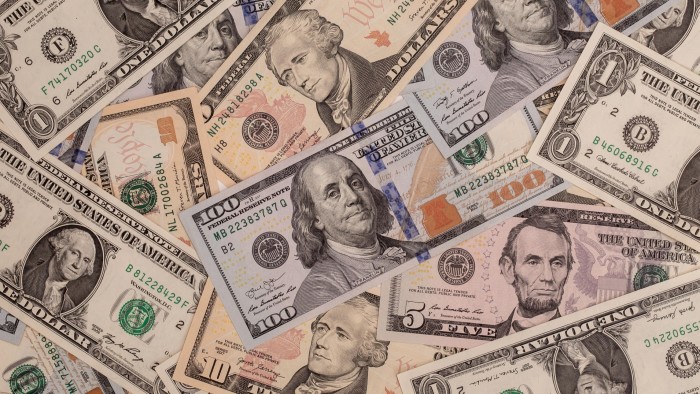Unlock the White House Watch newsletter for free
Your guide to what the 2024 US election means for Washington and the world
Steven Kamin was previously head of international finance at the Federal Reserve and is now senior fellow at the American Enterprise Institute.
In the wake of President Trump’s initial salvo of broad-based tariffs, on 2 April, stock prices plunged, volatility as measured by the VIX index soared, and Treasury yields shot up substantially.
Ordinarily, these developments would be expected to buoy the value of the dollar, which is a “flight-to-safety” currency sought out by investors during times of crisis and acute uncertainty. Instead, the value of the dollar, too, plunged. In fact — relative to the predictions of a simple econometric model — the dollar fell by the greatest margin in the past four years.
This suggests that the turbulence in the financial markets was more than just investors getting “yippy,” in Trump’s words. It may reflect the beginnings of a serious reconsideration by global investors of the performance and management of the US economy and the dollar.
The US dollar is the world’s most important currency. More than half of all international trade, including between non-US countries, is priced and invoiced in dollars. The lion’s share of international financial transactions are done in dollars. And nearly 60 per cent of the world’s international reserve holdings are in dollars, despite US GDP comprising only about a quarter of world income.
As my colleague Mark Sobel and I have explained, the dollar’s dominance derives from the strength and dynamism of the US economy, the unchallenged stature of our rule of law, the prudence of our economic policymaking and our close co-operative relations with our allies. But we have also cautioned that if the US abandons these strengths, pursuing reckless trade and fiscal policies, breaking trade agreements, bullying our allies, and undermining support for global institutions, this will encourage other countries to seek alternatives to the dollar. Trump has threatened countries with tariffs if they abandon the dollar, but nothing could accelerate that process more effectively than reckless actions against our trading partners.
Is this process now under way? It is early days, but the financial turbulence surrounding Trump’s chaotic tariff announcements, and especially the rise in Treasury yields combined with the fall in the dollar, is not a good sign. As indicated in the chart below, a surge in financial market volatility (the VIX index) after Trump’s announcement triggered a “dash for cash” by leveraged hedge funds, fuelling a sell-off in Treasury bonds that led to soaring yields.
Deleveraging-driven sell-offs in the Treasury market are unusual, because the demand for safe assets such as Treasuries tends to rise during times of volatility and crisis, lowering their yields. To be sure, such episodes are not unprecedented, and a similar sell-off occurred during the March 2020 Covid-19 panic, when again both Treasury yields and the VIX soared upwards until massive intervention by the Fed managed to calm markets.
However, there is a notable difference between the Covid-19 panic and the Trump tariff panic. In the former episode, the dollar — being a “flight-to-safety” currency — soared alongside the VIX as markets freaked out.
Conversely, in recent days, the dollar appears to have failed to benefit from flight-to-safety flows, and it has fallen well below its level prior to Trump’s April 2 tariff announcement.
How significant is this aberration? To make a more precise assessment, we estimated a simple equation regressing the level of the dollar on the 2-year Treasury yield, the difference between the 10-year and 2-year yields, and the VIX. As shown in the table below, all three variables are highly statistically significant, and they explain 85 per cent of the variation in the dollar since 2021:
Below is a chart comparing the actual and predicted values of the dollar. There are, of course, many misses between predicted and actual levels of the dollar, but the Trump tariff episode at the end of the sample appears to represent the largest such error. The model expects the spike in the VIX to substantially boost the dollar, but instead the dollar fell:
This is confirmed by a plot of the regression residuals, below. To be sure, the chart indicates serial correlation of the residuals, so the results need to be taken with a grain of salt. Even so, the miss on the dollar is extraordinarily large:
Does this mean the end of dollar dominance? Probably not. The pre-eminent role of the dollar in trade, international finance, and reserve holdings is hard-wired in place by network effects, institutionalised practices, and the lack of viable alternative currencies, and it will take time for them to erode.
But it is clear that, at least during this episode, the dollar has stopped acting like a “flight-to-safety” currency. The simultaneous rise in yields and fall in the dollar suggests a pullback from dollar assets that may reflect mounting concerns about the chaotic direction and implementation of US economic policy.








